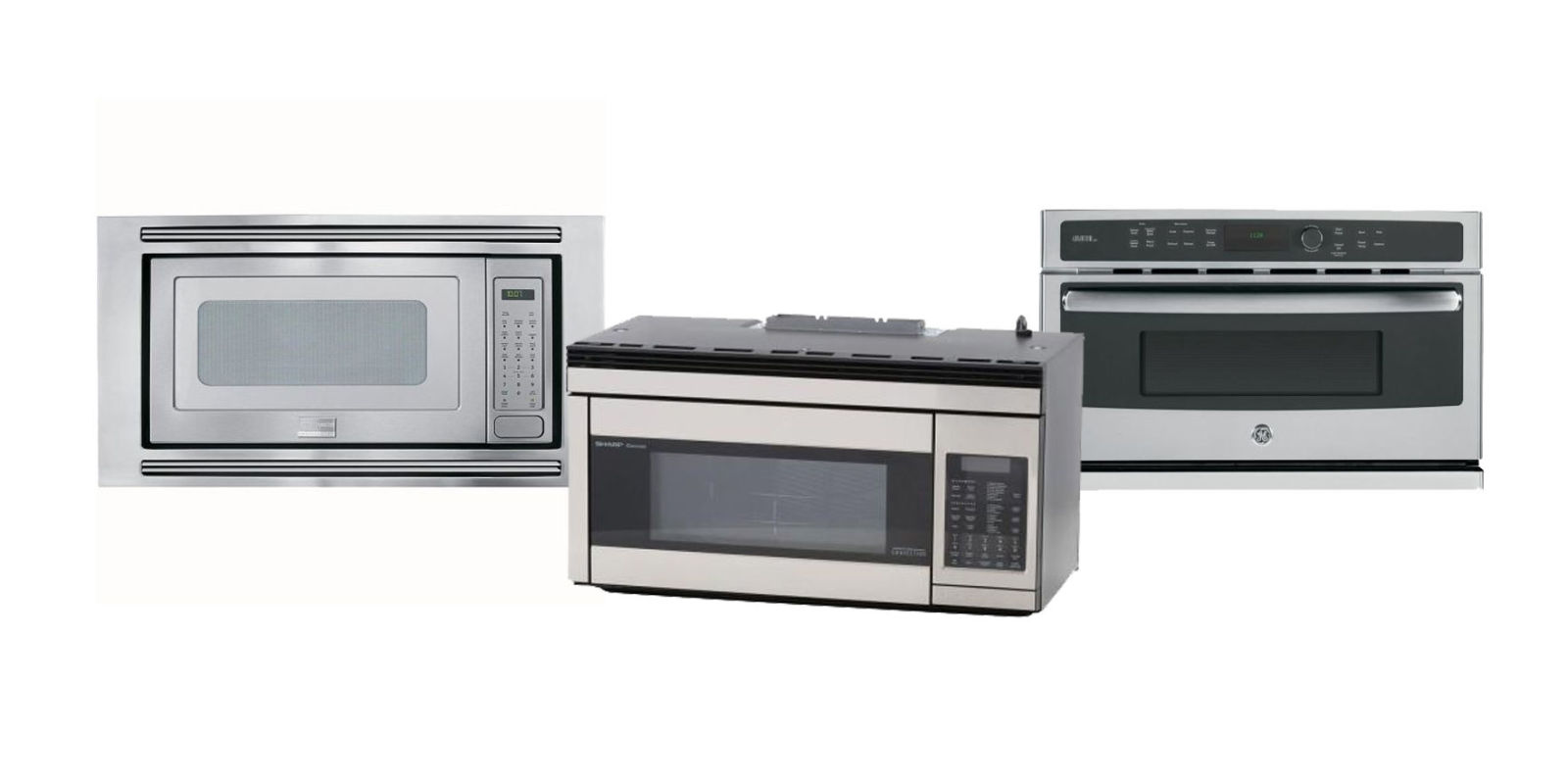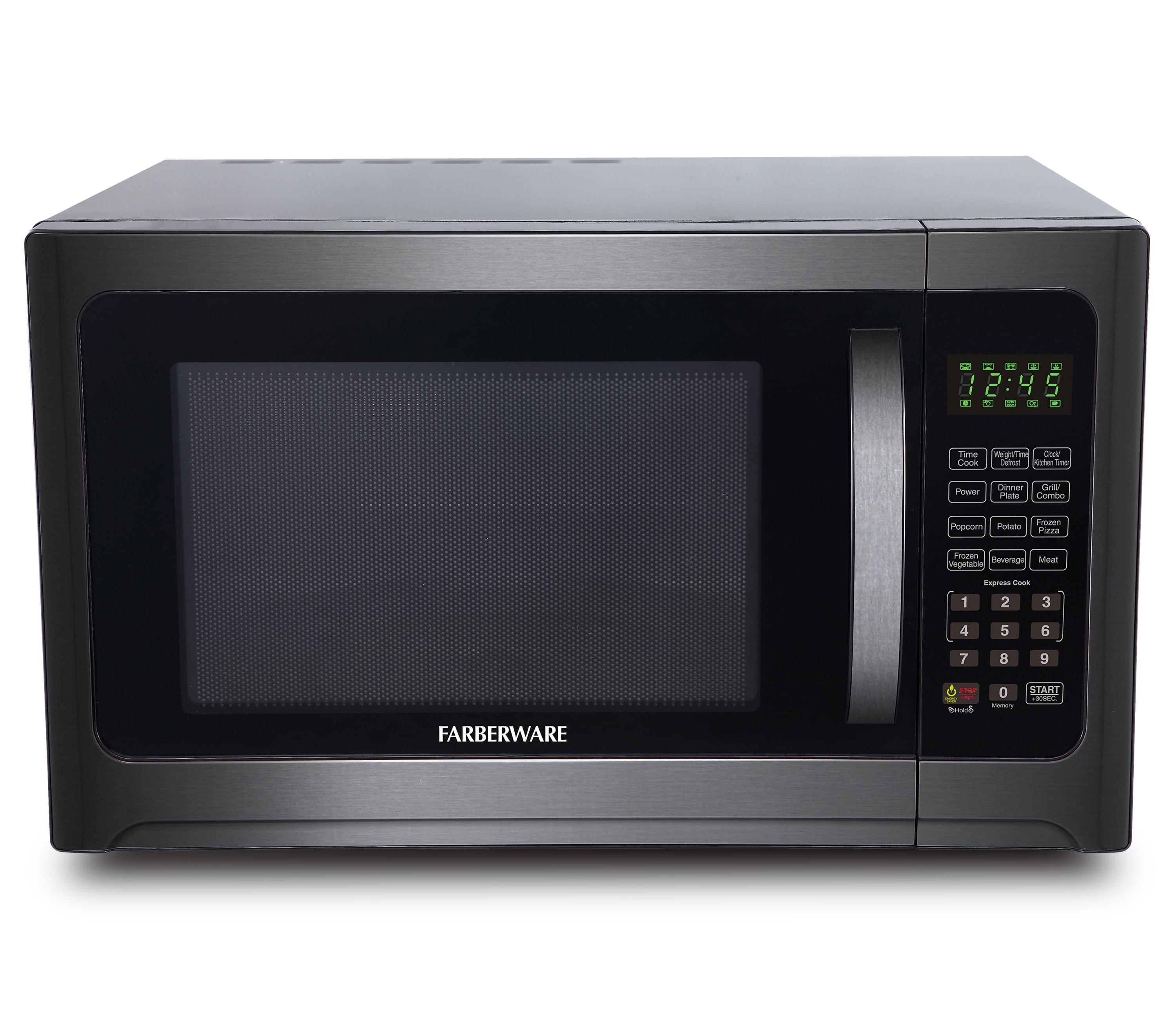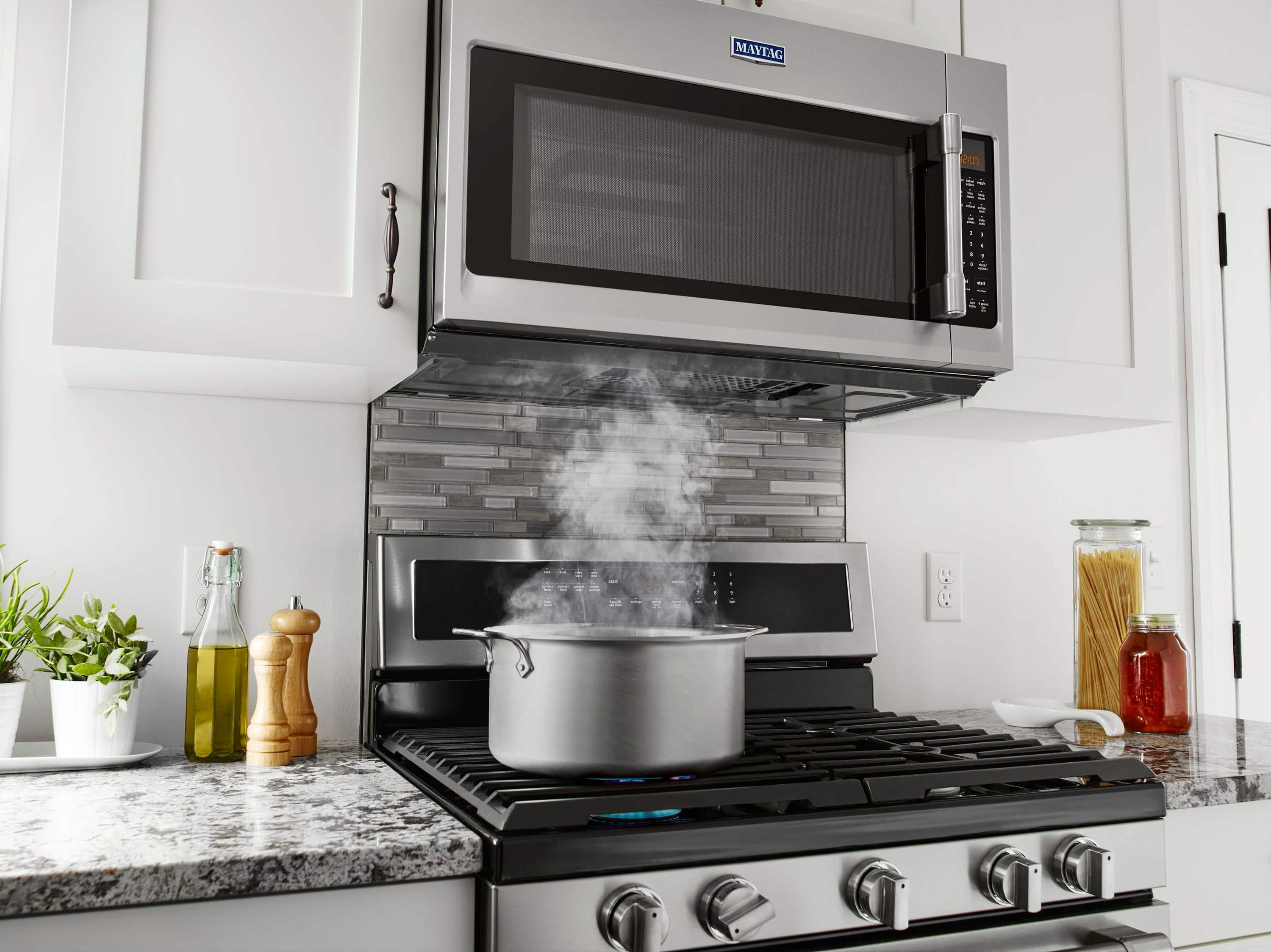Top 5 Best Built-in Cabinet Microwaves: Best Built In Cabinet Microwave

Choosing the perfect built-in microwave can transform your kitchen from functional to fabulous. Seamlessly integrating into your cabinetry, these appliances offer both convenience and a sleek, modern aesthetic. This guide delves into the top five models, providing a detailed comparison to help you navigate the world of built-in microwaves and find the ideal fit for your home.
Top 5 Built-in Microwave Comparison
The following table offers a comprehensive comparison of five leading built-in cabinet microwaves, considering key features and price points. Remember that prices can fluctuate, so it’s always advisable to check current retailer listings.
| Brand & Model | Wattage | Capacity (cu. ft.) | Features & Price Range |
|---|---|---|---|
| LG LMXS28975S | 1000W | 1.7 | Smart Inverter Technology, Sensor Cooking, EasyClean Interior, Wi-Fi Connectivity, $800 – $1000 |
| Whirlpool WMH31017HS | 1000W | 1.7 | Electronic Touch Controls, Turntable, 10 Power Levels, Steam Cleaning, $600 – $800 |
| Samsung ME18H704SFS | 1000W | 1.8 | Ceramic Enamel Interior, Turntable, 10 Power Levels, Child Lock, $700 – $900 |
| GE JVM3160SNSS | 950W | 1.6 | Electronic Controls, Turntable, 6 Power Levels, Interior Light, $500 – $700 |
| Bosch HMB8035UC | 1000W | 1.5 | Inverter Technology, Turntable, Sensor Cooking, LED Display, $900 – $1100 |
Installation Process for Each Microwave
Proper installation is crucial for optimal performance and safety. Each model may have slight variations, so always consult the manufacturer’s instructions.
Best built in cabinet microwave – The following points Artikel general installation considerations for built-in microwaves:
- Cabinet Preparation: Ensure the cabinet opening is the correct size and that the electrical outlet is appropriately located and grounded. Proper ventilation is essential to prevent overheating.
- Mounting Bracket: Most models utilize a mounting bracket to secure the microwave to the cabinet. Carefully follow the instructions for attaching the bracket.
- Wiring Connections: Connect the microwave to the power supply, ensuring all connections are secure and properly grounded. Incorrect wiring can lead to malfunction or fire hazards.
- Securing the Microwave: Once the wiring is complete, carefully slide the microwave into the cabinet opening and secure it to the mounting bracket.
- Testing: After installation, test the microwave to ensure all functions are working correctly.
Pros and Cons of Each Microwave Model
Understanding the strengths and weaknesses of each model helps in making an informed decision.
This section provides an overview of the user experiences and long-term durability considerations for each microwave:
- LG LMXS28975S: Pros – Smart features, excellent performance, easy cleaning. Cons – Higher price point, potential Wi-Fi connectivity issues.
- Whirlpool WMH31017HS: Pros – Reliable performance, affordable price, easy to use. Cons – Basic features, may not be as durable as higher-end models.
- Samsung ME18H704SFS: Pros – Stylish design, good capacity, easy-to-clean interior. Cons – Some users report inconsistent sensor cooking.
- GE JVM3160SNSS: Pros – Budget-friendly, simple operation. Cons – Fewer features compared to other models, may not be as powerful.
- Bosch HMB8035UC: Pros – Excellent performance, even heating, quiet operation. Cons – High price, may require professional installation.
Built-in Microwave Buying Guide

Choosing the perfect built-in microwave for your kitchen can feel like navigating a maze of options. This guide will illuminate the path, helping you make an informed decision that blends seamlessly with your culinary style and kitchen design. We’ll explore key factors to consider, essential features, and the nuances of different microwave technologies, empowering you to select the ideal appliance for years of reliable service.
Decision-Making Flowchart for Built-in Microwave Purchase
The journey to your perfect built-in microwave begins with a clear understanding of your needs and preferences. This flowchart visualizes the decision-making process, guiding you through each crucial step.
Imagine a flowchart starting with a central question: “What are your primary needs and budget?”. Branching from this are options like “Large Family, High Budget” leading to considerations of larger capacity and advanced features, “Small Kitchen, Budget-Conscious” leading to compact models with essential functions, and “Specific Cooking Needs (e.g., convection)”, directing the user to models with those specific features. Each branch would further refine the choices based on aesthetic preferences (modern, traditional, etc.) and ultimately lead to a selection of suitable microwave models. This process ensures a tailored choice that aligns with your kitchen’s dimensions, your budget, and your culinary aspirations.
Essential Features of Built-in Microwaves
Understanding the importance of key features is crucial for a satisfying purchase. These features enhance convenience, performance, and longevity.
- Capacity: Consider the size of your household and your typical cooking needs. A larger family might require a larger capacity microwave, while a smaller household might find a compact model sufficient.
- Power Output (Watts): Higher wattage translates to faster cooking times. Consider your typical usage; higher wattage is beneficial for faster heating, but not always necessary.
- Turntable Diameter: A larger turntable allows for cooking larger dishes. Ensure the turntable size is compatible with your typical cookware.
- Control Panel: Intuitive controls, whether digital or mechanical, are essential for ease of use. Consider the readability and responsiveness of the controls.
- Sensor Cooking: This feature automatically adjusts cooking time and power based on the food’s moisture content, resulting in more even cooking and reduced risk of overcooking.
Comparison of Built-in Microwave Technologies, Best built in cabinet microwave
Different technologies offer distinct advantages and disadvantages. Understanding these differences will help you choose the best fit for your cooking style.
| Technology | Advantages | Disadvantages |
|---|---|---|
| Convection Microwave | Combines microwave and convection heating for crispier results and more even cooking. Ideal for browning and baking. | Higher cost than standard microwaves. Can be more complex to operate. |
| Inverter Microwave | Provides more precise temperature control and even heating, leading to better food quality and less cooking time. | Generally more expensive than standard microwaves. |
| Sensor Cooking Microwave | Automatically adjusts cooking time and power based on food moisture, minimizing overcooking and ensuring consistent results. | May not be as precise as manual control for certain dishes. |
Troubleshooting Common Built-in Microwave Issues

Your built-in microwave is a kitchen workhorse, but like any appliance, it can occasionally encounter problems. Understanding common issues and how to troubleshoot them can save you time, money, and the frustration of a malfunctioning appliance. This guide provides practical, step-by-step solutions to get your microwave back up and running smoothly.
Microwave Not Heating
A microwave that refuses to heat food is a major inconvenience. This problem usually stems from a few key areas, and systematic troubleshooting can quickly pinpoint the cause.
- Check the Power Cord and Outlet: Ensure the microwave’s power cord is securely plugged into a functioning wall outlet. Try plugging in another appliance to confirm the outlet is working correctly. A loose connection or a faulty outlet can prevent the microwave from receiving power.
- Inspect the Circuit Breaker or Fuse: A tripped circuit breaker or blown fuse can interrupt power to the microwave. Check your home’s electrical panel for a tripped breaker (it will be in the “off” position) or a blown fuse (it will appear broken or discolored). Reset the breaker or replace the fuse as needed.
- Examine the Microwave’s Door Latch: The microwave’s safety mechanisms require the door to be securely closed for operation. A slightly ajar door or a malfunctioning latch can prevent the magnetron (the heating element) from activating. Carefully inspect the door and latch for any obstructions or damage.
- Check the Magnetron (Advanced Troubleshooting): If the previous steps yield no results, the problem might lie with the magnetron itself. This is an advanced repair that typically requires professional assistance. A faulty magnetron will require replacement by a qualified technician.
Microwave Sparking
Sparking inside a microwave is a serious safety concern and should never be ignored. It indicates a potential electrical hazard.
- Inspect the Interior for Metal Objects: Metal objects inside the microwave can cause arcing and sparking. Carefully remove any metallic items, including foil, utensils, or even metallic trim on dishes. Even a small amount of metal can create a spark.
- Check the Turntable and Roller Ring: Ensure the turntable is clean and rotates freely. A damaged or improperly seated turntable can cause sparking against the microwave’s interior. Examine the roller ring for any debris or damage.
- Examine the Microwave’s Interior for Damage: Look closely for any signs of damage or wear inside the microwave cavity, such as dents, cracks, or loose components. Any damage to the interior lining can create sparking hazards. If damage is found, professional repair is necessary.
- Contact a Qualified Technician: If sparking persists after checking the above, immediately unplug the microwave and contact a qualified appliance repair technician. Continued use could lead to further damage or electrical shock.
Malfunctioning Controls
Problems with the microwave’s control panel can range from minor inconveniences to complete malfunctions.
- Check the Control Panel for Obstructions: Ensure that nothing is blocking or interfering with the control panel buttons or keypad. Debris or sticky residue can prevent proper functionality.
- Test All Functions: Systematically test all the microwave’s functions, including different power levels, cooking times, and settings. This can help isolate the specific malfunctioning component.
- Reset the Microwave: Some microwaves have a reset button or procedure (often involving unplugging the appliance for a few minutes). Consult your microwave’s owner’s manual for the correct reset procedure.
- Professional Repair: If the control panel remains unresponsive or malfunctions despite troubleshooting, professional repair is recommended. Faulty control boards often require expert diagnosis and replacement.
Safety Precautions When Troubleshooting a Built-in Microwave
- Always unplug the microwave from the power outlet before attempting any internal inspection or repair. This prevents electrical shock and other hazards.
- Never attempt repairs if you are not comfortable working with electrical appliances. Improper repairs can cause further damage or create safety risks.
- If you detect any signs of electrical damage, such as sparking, burning smells, or unusual noises, immediately unplug the microwave and contact a qualified technician. Do not attempt to use the appliance.
- Always refer to your microwave’s owner’s manual for specific troubleshooting instructions and safety precautions. The manual contains detailed information tailored to your specific microwave model.
